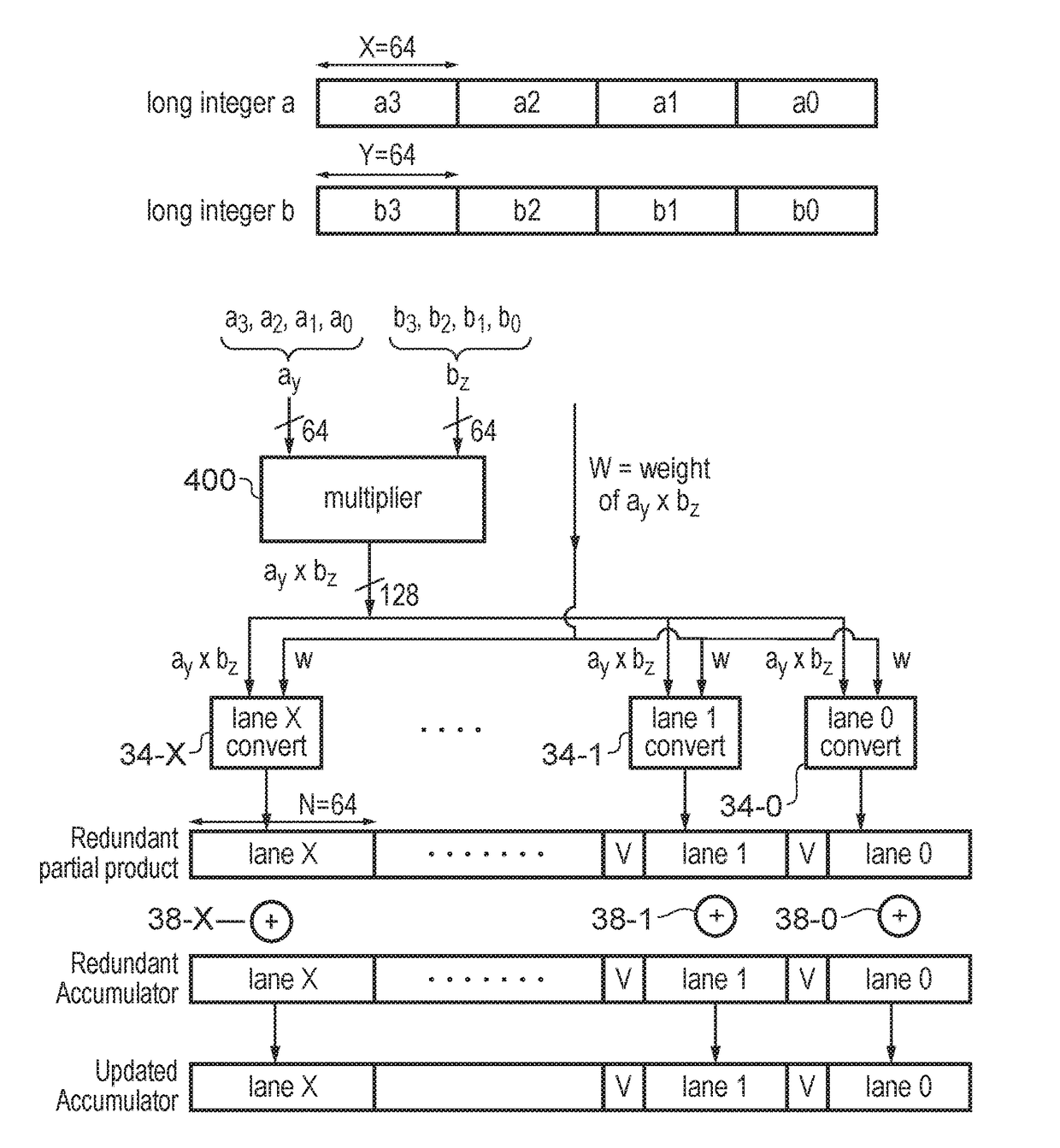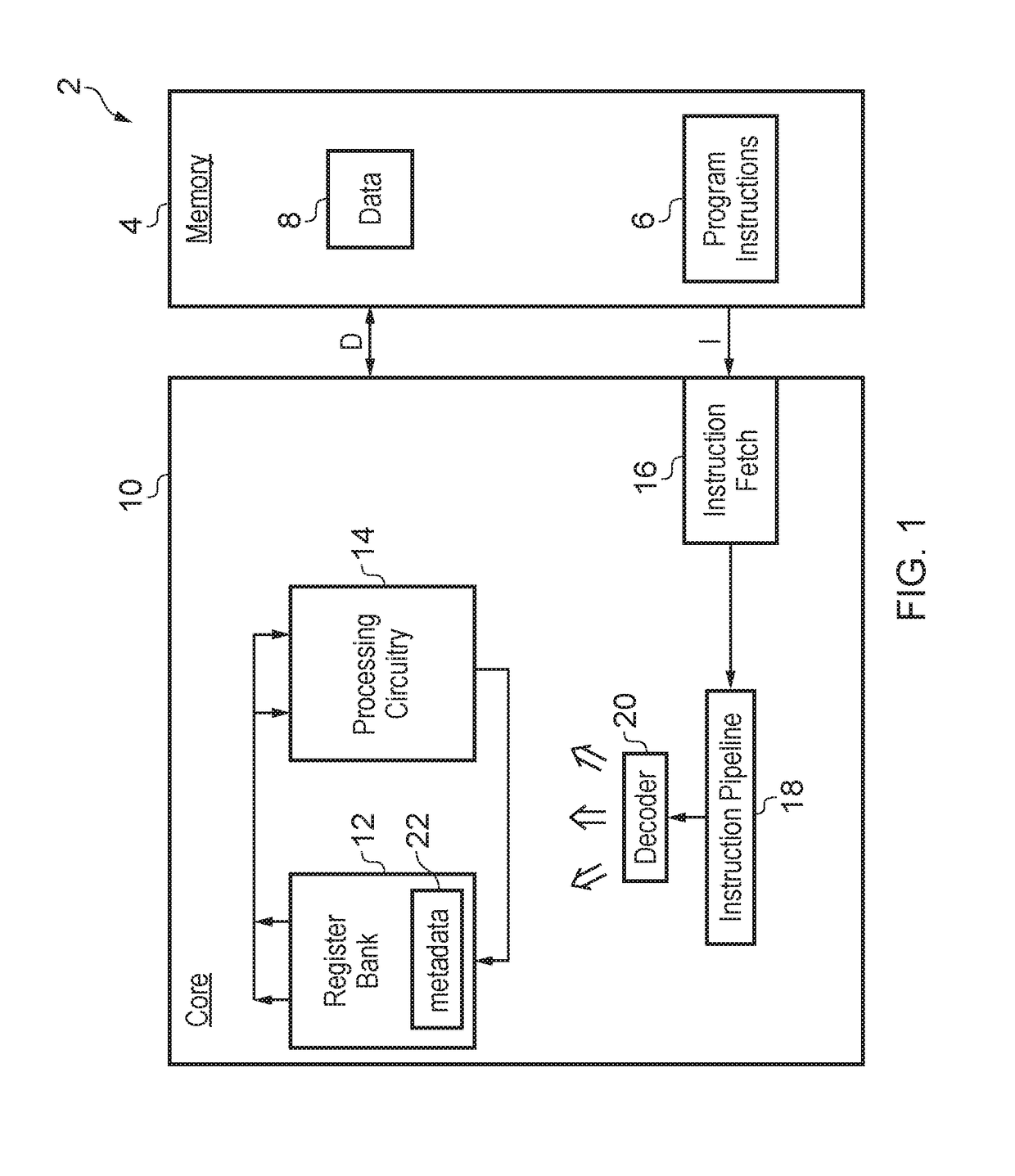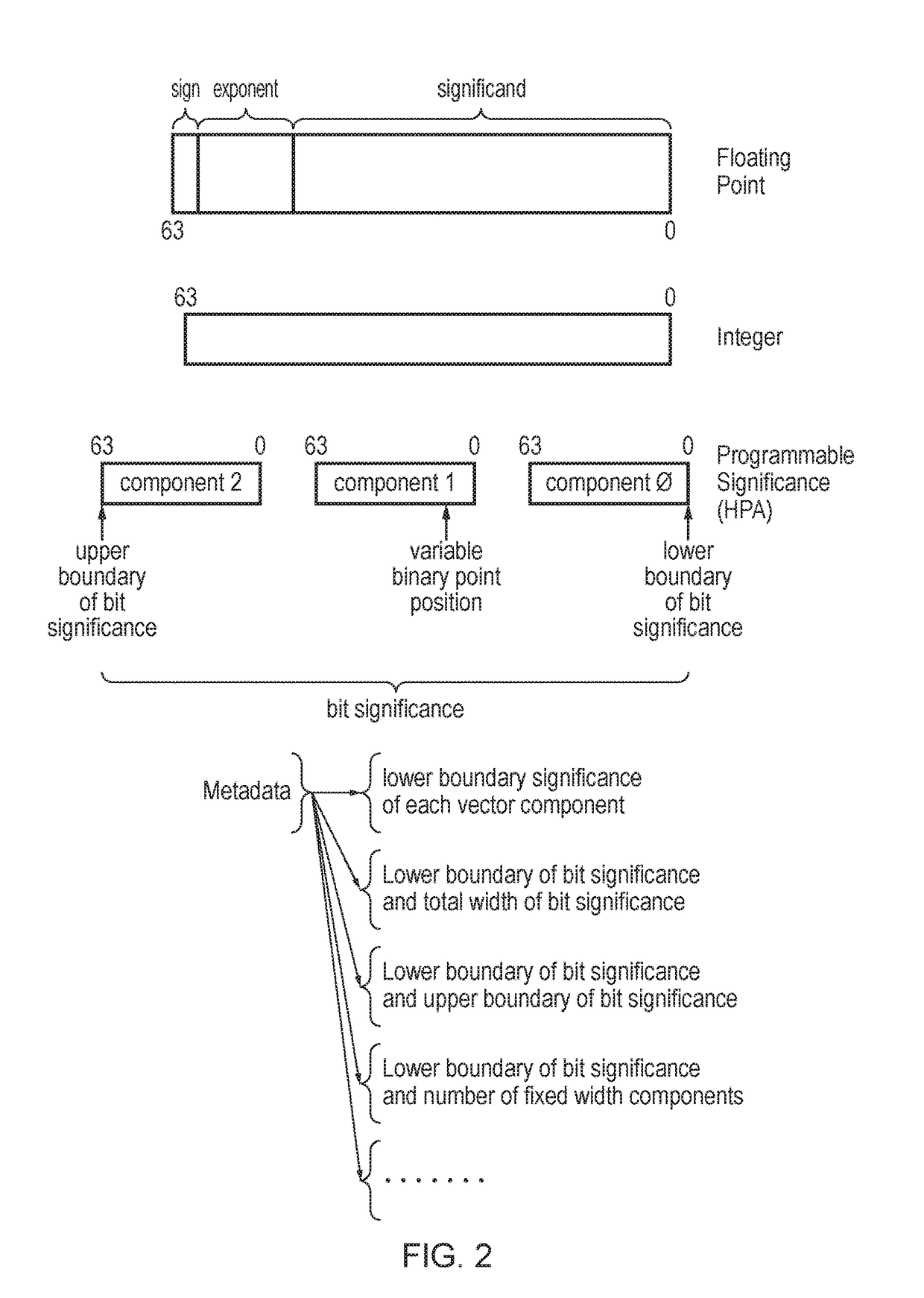Multiplication of first and second operands using redundant representation
a technology of redundancy and operands, applied in the field of data processing, can solve the problems of difficult parallelization of floating-point arithmetic, relatively slow floating-point arithmetic, and general non-associative calculus
- Summary
- Abstract
- Description
- Claims
- Application Information
AI Technical Summary
Benefits of technology
Problems solved by technology
Method used
Image
Examples
example 1
[0152]Suppose we convert the sign magnitude hexadecimal integer 123a to RHPA format. The anchor is zero, so the non-redundant bits of the low-order lane contains the part of the input with weights 20 to 23, namely a=1010 (binary). The number is positive, so the overlap bits of the low order lane are zeros, giving a low-order lane value of binary 0000_1010. Similarly, the next lane contains the parts of the input with weights 24 to 27, in this case 3=0011 (binary). Proceeding with all the lanes (they are all computed in parallel) we get the RHPA number:[0153]0000_0001 0000_0010 0000_0011 0000_1010
example 2
[0154]Converting 923a to RHPA is similar (this is −123a in sign-magnitude format), but since the sign bit is set, each lane gets the two's complement of what it did in the previous example:[0155]1111_1111 1111_1110 1111_1101 1111_0110
example 3
[0156]Adding 7fff (largest possible positive input) to 123a shows the utility of the overlap bits. rhpa is a small program here that adds a 16-bit sign magnitude number to one of the tiny RHPA numbers. The addition is easily handled with no carries between lanes because of the overlap bits.[0157]$ rhpa 0102030a 7fff[0158]0000_0001 0000_0010 0000_0011 0000_1010[0159]+0000_0111 0000_1111 0000_1111 0000_1111[0160]=0000_1000 0001_0001 0001_0010 0001_1001
PUM
 Login to View More
Login to View More Abstract
Description
Claims
Application Information
 Login to View More
Login to View More - R&D
- Intellectual Property
- Life Sciences
- Materials
- Tech Scout
- Unparalleled Data Quality
- Higher Quality Content
- 60% Fewer Hallucinations
Browse by: Latest US Patents, China's latest patents, Technical Efficacy Thesaurus, Application Domain, Technology Topic, Popular Technical Reports.
© 2025 PatSnap. All rights reserved.Legal|Privacy policy|Modern Slavery Act Transparency Statement|Sitemap|About US| Contact US: help@patsnap.com



